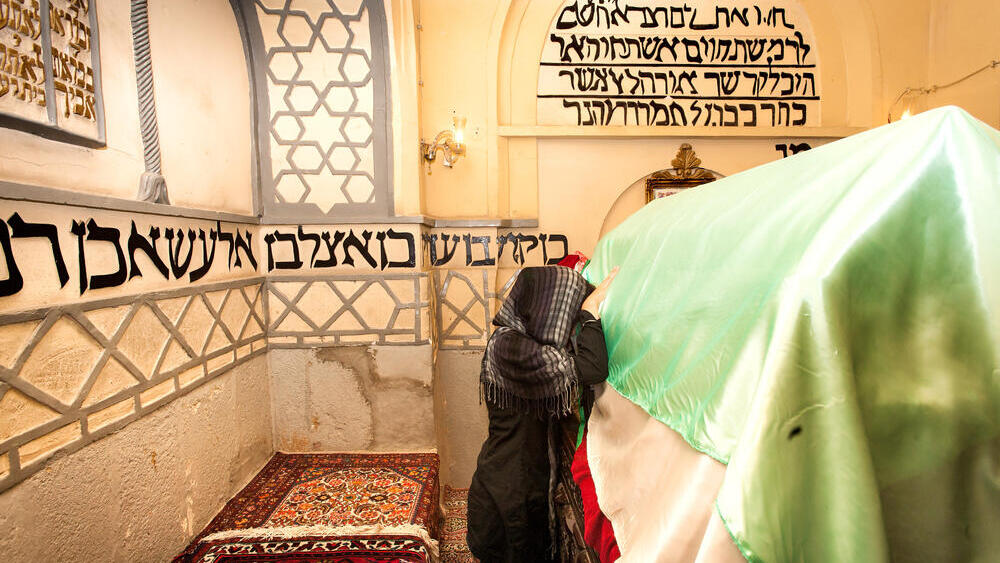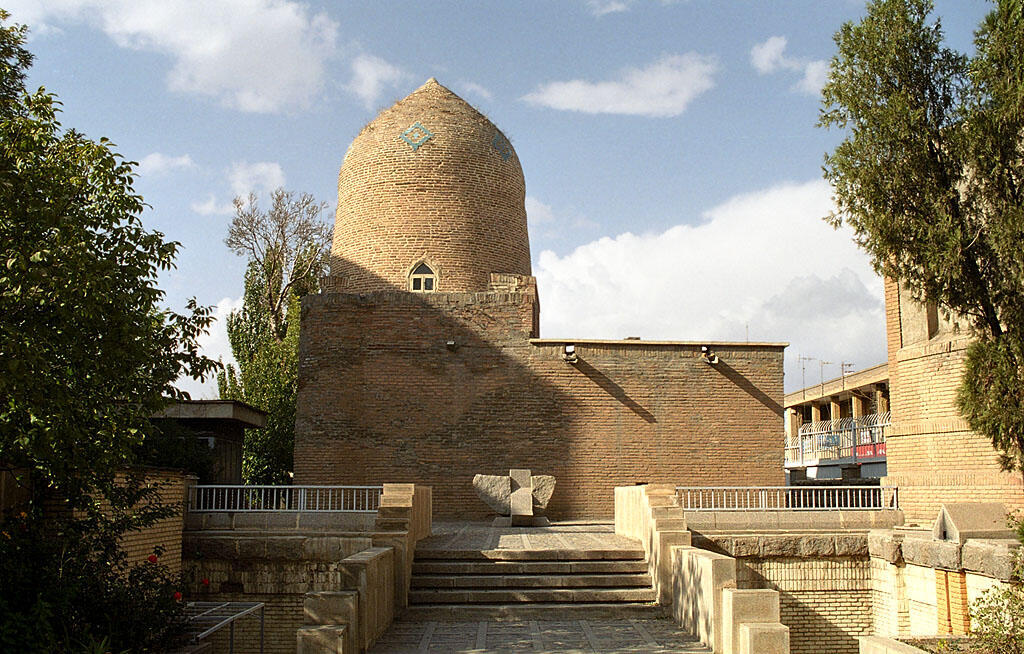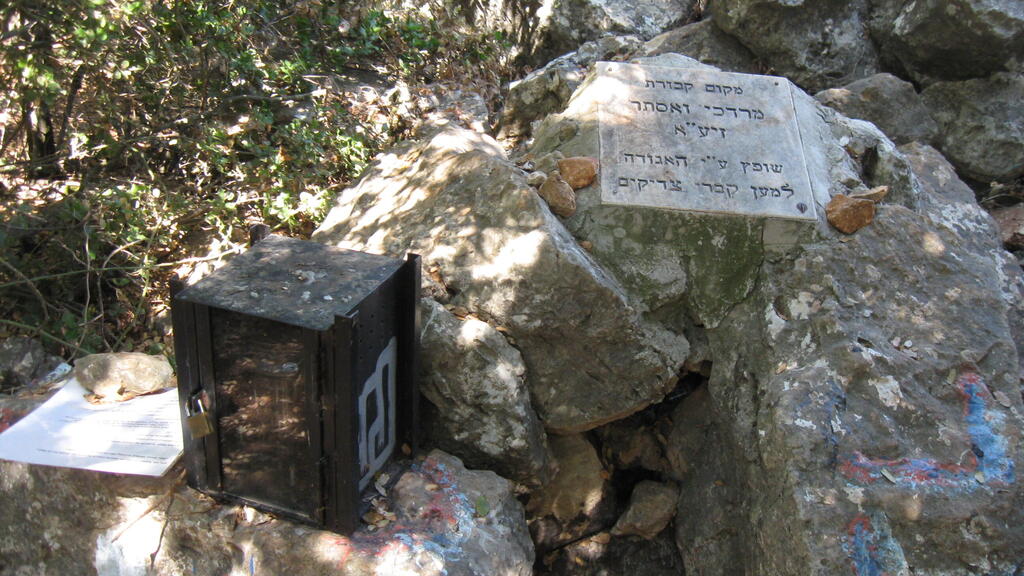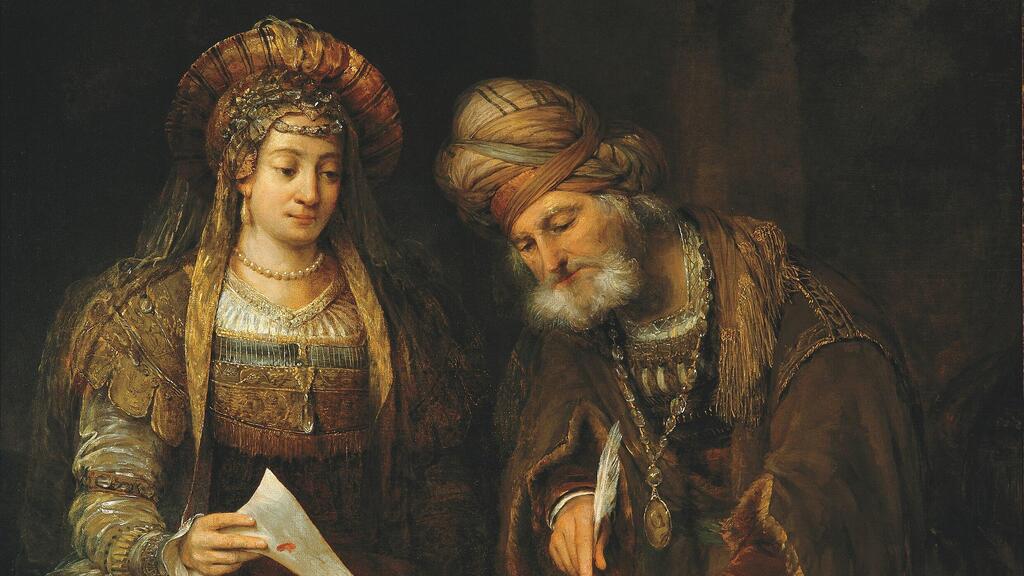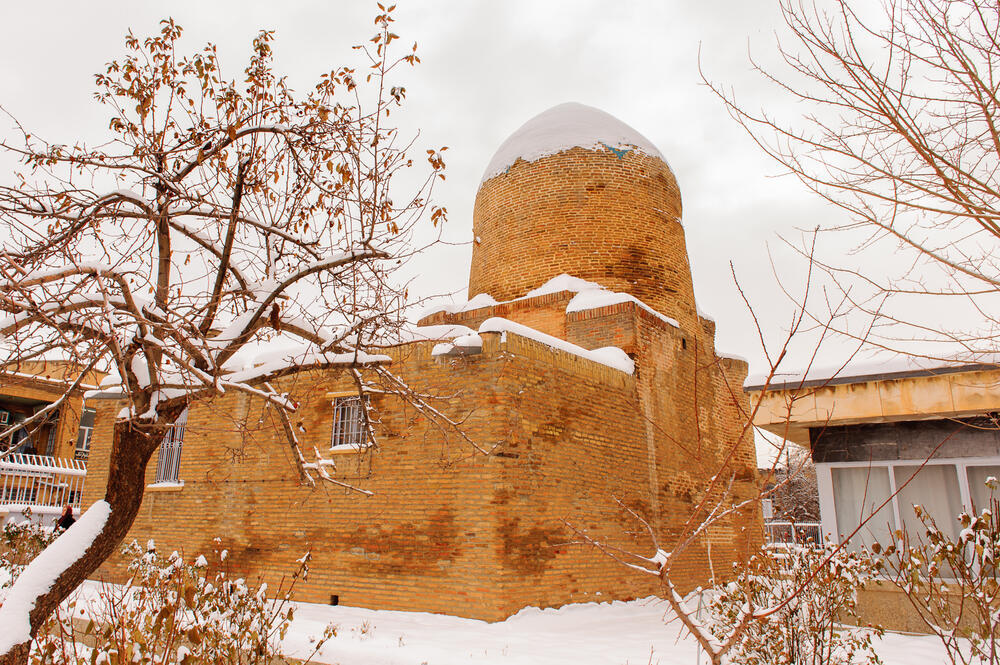Where were Queen Esther and Mordecai, the protagonists of the Purim Megillah, actually buried? In the Iranian city of Hamadan or Upper Galilee’s Bar'am? This contentious question arises every Purim. So where is this iconic duo's final resting place? And who brought their bones to Israel, if indeed they were reinterred in the Holy Land?
Esther and Mordecai’s burial place isn’t mentioned in the Bible, but two conflicting versions point to its exact location. According to the first tradition, favored by Iranian Jews, their burial is located in the city of Hamadan in today's northwestern Iran.
The tomb of Mordecai and Esther in Hamadan was first mentioned in the writings of Benjamin of Tudela (circ. 1170). According to this tradition, Queen Esther and Mordecai were buried in an ancient burial cave containing two large wooden coffins covered with draperies, with a sign posted next to it bearing the inscription "Mausoleum of Mordecai and Esther," which became a pilgrimage site for some of Iran's Jews.
According to this tradition, following the death of King Ahasuerus and Haman's attempts to kill Esther and Mordecai, the two fled to Hamadan, a city with a large Jewish community, where they lived out the rest of their days. The right-hand tombstone is Esther's and the left one is Mordecai's, and between them stands a stone covering a deep pit, which according to one tradition leads to Jerusalem.
According to another tradition, Mordecai and Esther are buried near Bar'am in Upper Galilee, after their bones were brought to Israel by Cyrus the Great, who buried them there. Menachem ben Peretz of Hebron (circ. 1215) mentioned during his visit to Galilee the site as their final resting place, similar to later Jewish pilgrims who mentioned the site and noted that special festivities were held there on Purim.
A stone tablet bearing the inscription "The burial place of Mordecai and Esther” was placed at the site. The location has become a focal point for pilgrimage during Purim, attracting many visitors who gather at the tomb and spend the holiday there, engaging in activities such as reading the Megillah, singing and dancing.
'This debate is entirely theoretical'
"Shushan was the winter capital of the Achaemenid kings (Ahasuerus’s dynasty), and Tel Shushan is located to this day in the city of Shushan (Susa in Persian) in the Khuzestan Province in southwestern Iran," says Iran specialist Dr. Thamar Eilam Gindin from the University of Haifa’s Ezri Center for Iran and Gulf States Research. "The summer capital was Ecbatana (Hamadan in ancient Persian, mentioned in the Book of Ezra as Achmetha), located in northwestern Iran."
According to her, "Since nothing is known about the travels of royalty and courtiers to the Galilee specifically, it’s logical to assume Mordecai and Esther were buried in a city that was one of the capitals of the Achaemenid kings, so the summer capital of Ecbatana is an excellent candidate in this case.
“The structure housing Mordecai and Esther's tomb dates back hundreds of years and is located outside the archaeological site of Ecbatana. The Persian kings themselves weren’t buried in their capitals but in magnificent mausoleums in the Pars Province in the south of the country."
The story of Cyrus and the reinterment of bones to Israel amuses Dr. Gindin. "Cyrus is considered a messiah for the Jews, and it’s difficult for us to accept a messiah who isn’t Jewish. Therefore, there are Jewish traditions according to which Cyrus is the son of Esther," she says.
"But if we look at the documented history of the Achaemenid dynasty, both in what they wrote themselves and what the Babylonians and Greeks wrote about them, we find that Cyrus was the Ahasuerus’s maternal grandfather, making it difficult for Esther to be his mother."
"Since no documentation of the Purim story exists in other sources and the story resembles other regional myths, Mordecai and Esther aren’t considered historical figures, so this debate is entirely theoretical," she notes. "But assuming the event did take place, it’s more logical they died in the summer and were buried near Ecbatana."
The Hamadan site in Islamic tradition
The burial site in Hamadan has been desecrated recently amid the war in Gaza. Iranian Jews who came to the site to pray for Esther's Fast were surprised to find a Palestinian flag hoisted outside the compound.
In October, after the outset of the war, demonstrators burned an Israeli flag outside the tombs. Extremist protesters even demanded to turn the building into a "Museum for the crimes of the Zionist regime," and to establish a public relations office with a "Palestinian Resistance Forces" in its place.
Dr. Yosef Bukhari, 84, who was born in Hamadan and made Aliyah after the 1979 Islamic Revolution, asserts that he and his family have always known the graves of Mordecai and Esther to be located solely in Hamadan.
Dr. Bukhari's grandfather was a rabbi in Hamadan for many years and was responsible for tending to the graves of Mordecai and Esther. However, the site is now under the supervision of the Iranian government.
Dr. Bukhari recounts that "on Purim, every Jew in the city (whose Jewish community previously numbered about 5,000 people) visited the tombs, with young and old women alike wearing colorful dresses, lighting candles and handing out sweets, while the men prayed in the room where an ancient Torah scroll lay. Today, few Muslims visit the site, mainly barren women and sick people, believing they could receive blessings for their conditions."
"According to the Jewish religion, Jews must bury the deceased without moving the bodies," Bukhari said. "Due to the great distance between Iran and Israel, it’s unreasonable that their bones were brought to Israel at that ancient time. Therefore, I’m confident that Mordecai and Esther's graves are the ones located in Hamadan. Moreover, the fact the location of the grave in Israel is in Upper Galilee and not in Jerusalem is also puzzling to me."


